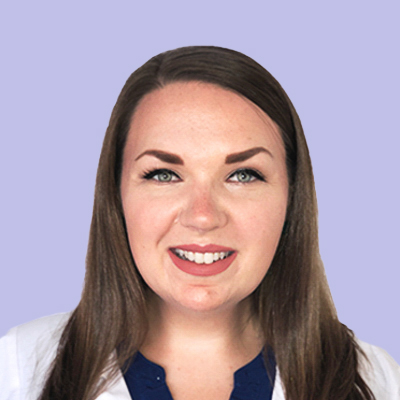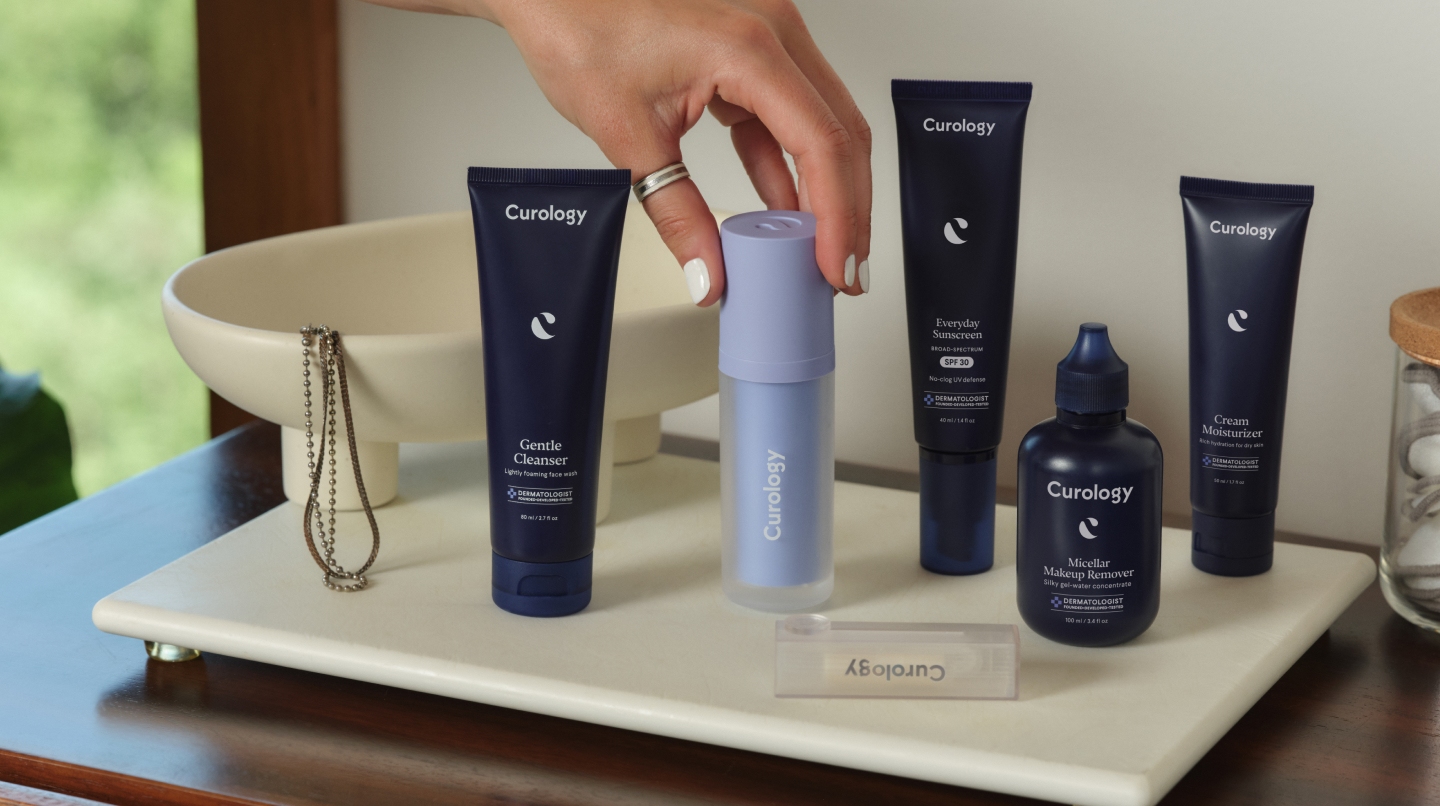How it works:
Share your skin goals and snap selfies
Your dermatology provider prescribes your formula
Apply nightly for happy, healthy skin
How it works:
How it works:
Share your skin goals and snap selfies
Your dermatology provider prescribes your formula
Apply nightly for happy, healthy skin
How it works:
9 tips for treating and helping prevent infected acne lesions
Everything you need to know about clearing up infected pimples—and steering clear of new ones.



Breakouts can be frustrating and sometimes difficult to clear up. And for many, pimples can also be tempting to pop or pick at, which often can make matters even worse because they may become infected. But what does that even mean?
Infected acne can sound pretty scary—but know that there are ways to help treat and prevent infections from happening. Whether you’re wondering how to treat an infected blackhead, an infected whitehead, or simply how to treat an infected pore, we have the answers. Here’s everything you need to know about treating infected acne lesions and avoiding them in the future.
What is infected acne?
Just because a pimple contains pus (like whiteheads) doesn’t mean it’s infected. And pimples that contain pus aren’t the only kinds of acne with the potential to become infected. There are several types of acne—blackheads, whiteheads, papules, pustules, cysts, and nodules, to name a few—that could become infected depending on the circumstances.
Basically, acne lesions become infected when other bacteria—Staphylococcus aureus, for example—join the mix.
The symptoms of a Staphylococcus aureus infection, also known as a “staph infection,” can include painful, swollen red bumps, swollen and hot skin, and even sores or blisters.¹ Keep in mind, these infections are not caused by the bacteria that contributes to acne (C. acnes). C. acnes is not infectious.
How to know if your acne lesion is infected?
There are several different types of infections that may be caused by staph bacteria such as:
Boils are painful, pus-filled bumps that develop in hair follicles.²
Impetigo is technically a rash, so it's more likely to cover a larger area than a typical pimple. It often results in a honey-colored crust around the lesions.³
Cellulitis occurs deep in the skin, and its primary symptoms are warmth, swelling, tenderness, and redness.⁴
As a reminder, these infections are not caused by the bacteria that contribute to acne (C. acnes). C. acnes is not infectious.

Three reasons why acne lesions get infected
Remember, if you experience infected acne, it doesn't necessarily have anything to do with your hygiene. Infections can happen, plain and simple—so remember to be kind to yourself if you get one. Also, infected acne lesions are very rare! That said, if you do experience one, here are several reasons it may have happened:
Picking at acne lesions. Staph bacteria can be harmless on the skin, but it’s a different story if it enters an open wound. Popping a pimple (or even attempting to do so) can lead to just that, an open wound that allows bacteria to enter.⁵
Not keeping open lesions clean. If you do happen to pop a pimple or pick at a scab (we recommend you avoid doing either!), make sure you keep the area clean.
Forgetting to wash your hands. Your hands touch many things, so it's no surprise if they come in contact with staph bacteria. That's why it's important to thoroughly wash them before touching your face, especially if you have an open acne lesion.⁶
How to treat infected acne lesions
Several prescription medications exist for treating infected acne, and one of the most common that doctors prescribe are topical or oral antibiotics. Another infection treatment involves draining the acne lesion through a small incision; this is a very delicate procedure and should only be performed by a medical professional.
Some side effects may come with treatment for an infection. If you use a topical treatment, you might notice itching and burning, while you might experience nausea and diarrhea when taking an oral medication. Curology offers dermatologist-designed skincare, but we're unable to provide treatment for infections. So if you think you may have an infected pimple, we recommend making an appointment with an in-person medical provider.
How to help prevent infections in acne lesions?
There are many different things you can do to prevent infections when it comes to acne. The good news is infections are treatable and preventable. Here are a few tips to help keep you as free of infected acne as possible:
Don’t share face tools. We know sharing means caring, but when it comes to washcloths, makeup brushes, and other items that come in contact with your skin, it's best to have your own supply. Doing so will help prevent exchanging bacteria with others.
Wash your—you guessed it—hands. Yes, we know we sound like a broken record. But that’s because we can’t stress enough how especially important it is to wash your hands before touching your face or any open wound.
Keep it clean. Were you unable to resist popping a pimple or picking at a whitehead, and now you have an open wound? Be sure to wash and disinfect the area—gently but thoroughly—and try to resist the urge to pick at it anymore.
Another way to help prevent acne from becoming infected is to properly treat breakouts as soon as possible (more specifically, before they have a chance to become infected). Here are a few key active ingredients commonly found in acne treatments that can help do just that.
Benzoyl peroxide. Benzoyl peroxide effectively fights C. acnes, the bacteria that contribute to breakouts, which makes it a key ingredient for fighting inflammatory acne-like pustules, papules, cysts, and nodules.⁷ Available in both cleansers and spot treatments, it’s easy to find and use, too.
Retinoids. Retinoids are another acne treatment that is available over-the-counter or as prescription topical retinoids, such as tretinoin.⁸ Curology’s Custom Formula can also contain tretinoin.
Isotretinoin. If you’re wondering how to treat severe pimples on the face or elsewhere, Isotretinoin (Accutane) may be just what the doctor ordered. This oral acne medication, a vitamin A derivative, can help those who experience cysts and/or nodules that don’t respond to other treatments.⁹
Curology prescription acne treatment
At Curology, we believe acne doesn’t have to be scary. We want you to know you have plenty of medical treatment options and knowledge on your side. Our aim is to make skincare accessible by offering dermatologist-designed skincare that’s personalized for you. We want to be your acne-fighting ally. Sign up for a free trial and get started with your custom acne treatment plan.*
Get your personalized skincare routine with Curology
Get your personalized skincare routine with Curology


We consider ourselves experts when it comes to acne, but if you think you’re dealing with a more severe acne breakout that may be infected, we recommend scheduling an appointment with an in-person medical provider for a diagnosis.
FAQs
Acne lesions become infected when other bacteria—Staphylococcus aureus, for example—join the mix. The symptoms of a Staphylococcus aureus infection, also known as a “staph infection,” can include painful, swollen red bumps, swollen and hot skin, and even sores or blisters.
There are several different types of infections that may be caused by staph bacteria such as:
Boils are painful, pus-filled bumps that develop in hair follicles.
Impetigo is technically a rash, so it's more likely to cover a larger area than a typical pimple. It often results in a honey-colored crust around the lesions.
Cellulitis occurs deep in the skin, and its primary symptoms are warmth, swelling, tenderness, and redness.
Don’t share face tools. We know sharing means caring, but when it comes to washcloths, makeup brushes, and other items that come in contact with your skin, it's best to have your own supply.
Wash your—you guessed it—hands. Yes, we know we sound like a broken record. But that’s because we can’t stress enough how especially important it is to wash your hands before touching your face or any open wound.
Keep it clean. Were you unable to resist popping a pimple or picking at a whitehead, and now you have an open wound? Be sure to wash and disinfect the area—gently but thoroughly—and try to resist the urge to pick at it anymore.
P.S. We did the research so you don’t have to:
1. Mayo Clinic Staff. Staph infections. (2020, May 6).
2. Lin, H. S., et al. Interventions for bacterial folliculitis and boils (furuncles and carbuncles). The Cochrane database of systematic reviews. (2021, February 26).
3. Heartman-Adams H., et al. Impetigo:Diagnosis and Treatment. American Family Physician. ( 2014, August 15).
4. Brown B.D. and Watson. K. L. Cellulitis. StatPearls. (2021, December 11).
5. American Academy of Dermatology.Pimple popping: why only a dermatologist should do it. (n.d.).
6. Cleveland Clinic. Staph Infection. (n.d.)
7. Kawashima, Makoto et al. Clinical efficacy and safety of benzoyl peroxide for acne vulgaris: Comparison between Japanese and Western patients. The Journal of dermatology. ( November 2017).
8. Leyden, J., et al. Why Topical Retinoids Are Mainstay of Therapy for Acne. Dermatology and therapy, (September, 2017).
9. Zaenglein, A. L., et al. Guidelines of care for the management of acne vulgaris. Journal of the American Academy of Dermatology. Ibid.
We’re here to tell you what we know. That’s why our information is evidence-based and fact-checked by medical experts. Still, everyone’s skin is unique—the best way to get advice is to talk to your healthcare provider.
*Cancel anytime. Subject to consultation. Trial is 30 days + $4.95 shipping and handling. Results may vary.

Curology Team

Donna McIntyre, NP-BC
Related Articles
How to remove makeup without makeup remover wipesThe complete guide to face cleansers for every skin typeThe 6 best chemical exfoliators for glowing skinHow long does a rosacea flare-up last? Experts explainIs my skin purging?Popular Articles
Ask Curology: Is my cold breaking me out?Slugging: The dermatologist-approved skincare hack going viral on TikTokTretinoin vs retinol: What’s the difference?How to create a self-care routine that actually sticksYour 2023 skincare horoscopeTry prescription skincare
Get routine essentials

Good skin days ahead
- Breakouts
- Redness
- Fine lines
- Dark spots
- Hair thinning